Perched on mountain peaks, nestled in enchanted forests or overlooking the sea, Italy's castles are countless, each one so different from the others. Witnesses of a long history, castles take us back to distant worlds that evoke mythical fairy tales and ancient legends.
Defensive fortresses and noble residences dot cities all over the boot. Today, unfortunately, many of these have been destroyed or reduced to ruins, but fortunately many others stand the test of time. Here are 20 spectacular castles to visit in Italy.
The 20 most beautiful castles in Italy you absolutely must visit
Scaliger Castle of Malcesine
Rocca Scaligera of Sirmione
Aragonese Castle of Ischia
Castel dell'Ovo
Rocca Calascio
Forte Diamante
Castle of Miramare
Bard Castle
Sant'Angelo Castle
Torrechiara Castle
Brisighella Fortress
Brisighella Fortress
Castel del Monte
Albornoziana Fortress of Spoleto
Pandone Castle of Venafro
Sforzesco Castle in Milan
Fenis Castle
Otranto Aragonese Castle
Trani Swabian Castle
Aci Castle
Ruffo Castle
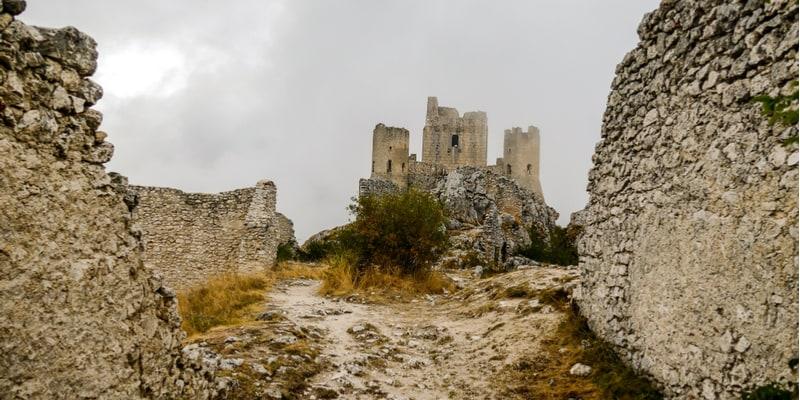
Castles of Italy
Scaliger Castle of Malcesine, Veneto
This medieval castle on the Veneto shore of Lake Garda enchanted even Goethe, who wrote about it in his Italian Journey. The Rocca di Malcesine dates back to the last centuries of the first millennium B.C., but it seems more reliable that it was built by the Lombards, around the middle of the first millennium A.D. It was later named Castello Scaligero when, in 1277, it became the domain of Alberto della Scala. Declared a national monument, the castle houses the Natural History Museum on the ground floor. Not to be missed are the powder magazine built by the Austrians, now called the Goethe Hall, the Scaliger Chapel and the Lacaòr, probably one of the oldest protohistoric settlements in Malcesine. From the platform of the Rivellino and the castle tower you can enjoy a wonderful panorama of Malcesine, Lake Garda and the western flank of Mount Baldo.

Rocca Scaligera of Sirmione, Lombardy
The Scaliger Castle at Sirmione is an extraordinary example of lake fortification and one of the most spectacular and best-preserved Scaliger fortresses on Lake Garda. Built after the mid 14th century, it takes its name from the Della Scala family that ruled over Verona and its territory between the 13th and 14th centuries.
Completely surrounded by water, the castle still has a dock that was once the place of refuge for the Della Scala fleet. Don't miss a visit to the dungeons where the walled remains of the Monasteriolo di S. Salvatore dating back to the Longobard era can be found.
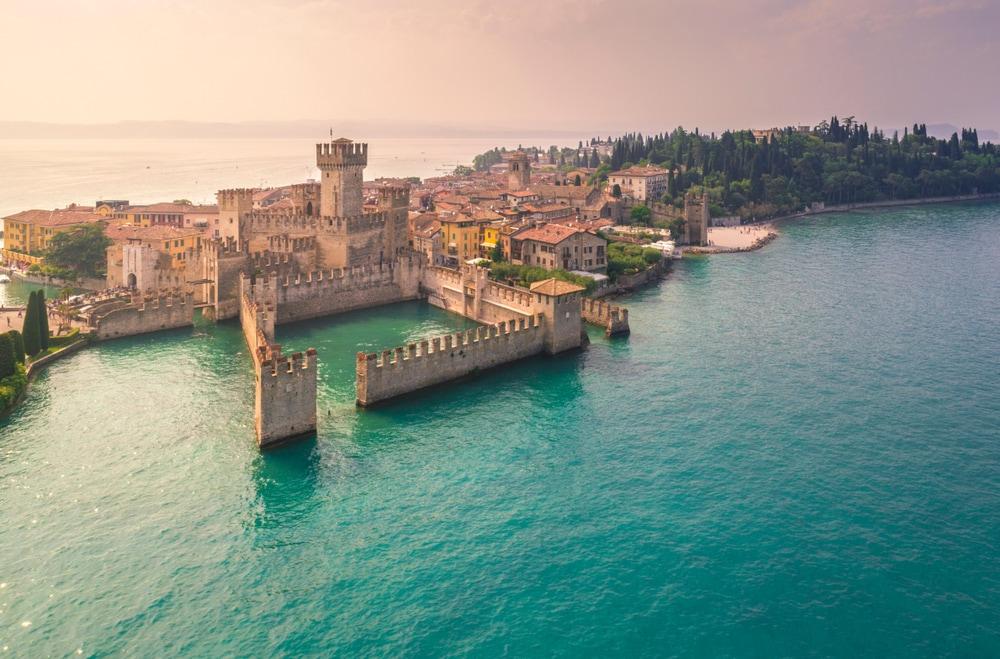
Aragonese Castle of Ischia, Campania
The Aragonese Castle ofIschia stands on an islet that was probably formed 300 thousand years ago by an eruption. Connected to the ancient village of Celsa by Ischia Ponte, the castle was founded in 474 BC by Hieron I, known as the tyrant of Syracuse. But in 1441 it was Alfonso d'Aragona who created what is still called the Aragonese Castle. The 16th century was then the period of its greatest splendour: on 27 December 1509, the wedding between Fernando Francesco d'Avalos and Vittoria Colonna was celebrated in the castle cathedral. Totally abandoned, the castle was later recovered thanks to the intuition of a far-sighted lawyer from Ischia. You will find traces of these twenty-five centuries of history among the churches, convents, prisons and lush gardens. The belvedere then, suspended between sky and sea, will leave you speechless.
Castel dell'Ovo, Naples, Campania
Castel dell'Ovo is located on the islet of Megaride, a strip of land where the history of Naples originated. Connected to the mainland by a bridge that links it to the Neapolitan seafront, today the islet is known as Borgo Marinari and is one of the city's most picturesque spots. Castel dell'Ovo is the oldest castle in Naples. Its history began during the Roman imperial age, but it took on its present appearance when Roger the Norman conquered Naples and built the castle in 1140. Most subsequent kingdoms used it as a prison or mainly as a fortress to guard court treasures.
Today, it is a symbol of the splendour and history of Naples and a vantage point overlooking the Bay of Naples and Vesuvius.
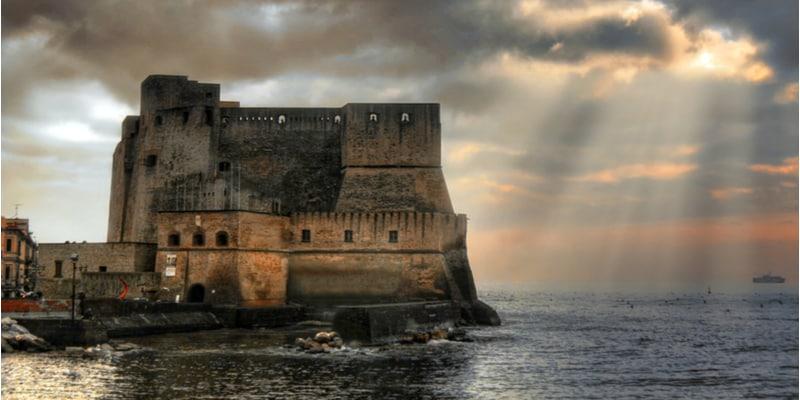
Rocca Calascio is located in the Gran Sasso National Park at an altitude of 1460 metres. The castle dominating the Tirino valley and the Navelli plateau a short distance from the Campo Imperatore plain is therefore in a very favourable position from a defensive point of view and was used as a military observation point in communication with other nearby towers and castles as far as the Adriatic. The foundation of the fortress is traced back to Roger II of Altavilla after the Norman conquest in 1140. The white stone structure consists of a central keep, probably pre-existing, a crenellated circle of walls made of pebbles and four corner towers with a circular base. Rocca Calascio has been the set of numerous films, from Monicelli's Amici miei - Atto II to the more recent The American starring George Clooney.
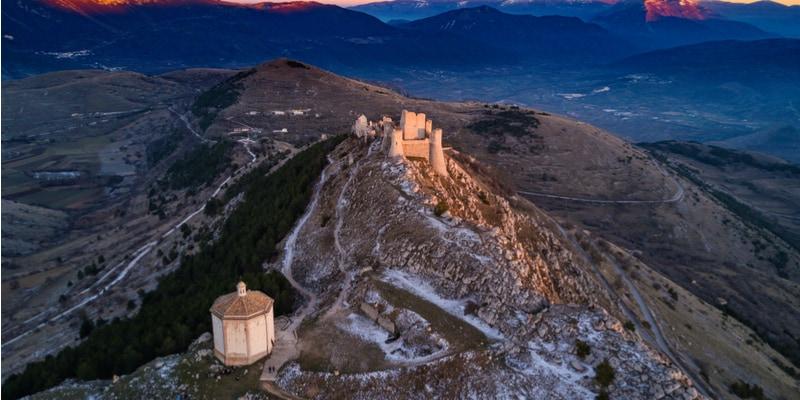
Forte Diamante, Liguria
This is one of the most characteristic forts of the entire defensive walls of Genoa. It was completed in 1758 by the Republic of Genoa right on the summit of Monte Diamante, some 667 metres above sea level. Its dominant position over the Polcevera and Bisagno Valleys and its distance from the city centre made the fort the city's first defensive bulwark against incursions from the north. The castle tells the story of the Republic of Genoa and the Habsburgs. In the spring of 1800, in fact, during the Austrian siege of the city, Forte Diamante was the scene of fierce fighting between the French and the Habsburg troops. Some Italian patriots also participated in the battle, including the young poet Ugo Foscolo. Today, the fort is often a popular destination for trekking enthusiasts.
Characterised by a pentagonal embankment inside which is what was once the three-storey barracks, the castle will impress you with its position offering an exceptional panorama over the city and the Ligurian coast. On a clear day you can even see Portofino clearly.
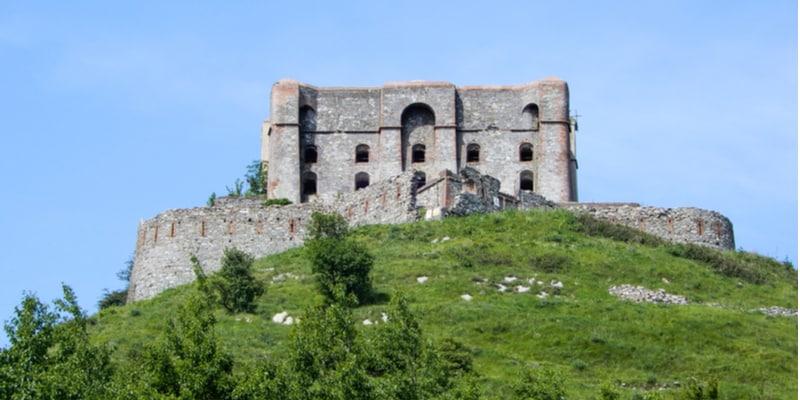
Miramare Castle, Trieste, Friuli-Venezia Giulia
On the rocky promontory of Grignano, overlooking the Gulf of Trieste stands the Castle of Miramare. Built between 1856 and 1860 in an eclectic style, the castle was the residence of Archduke Ferdinand Maximilian of Habsburg and his wife Charlotte of Belgium. Visit the 20 rooms of the castle, including the sumptuous state rooms and the private flats of Maximilian and Charlotte. Stroll through the beautiful Italian gardens and don't miss the castelletto, a smaller building, also located in the park, which was the residence for the newlyweds during the construction of the castle and became Charlotte's prison when she lost her mind after her husband was killed in Mexico.
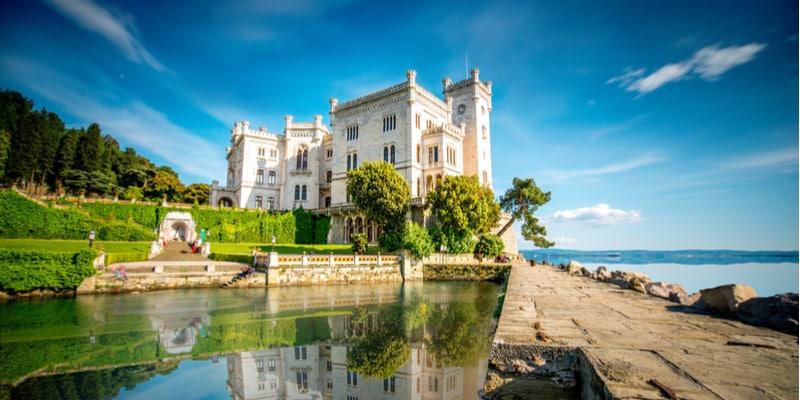
Bard Castle, Val d'Aost
The Fortress of Bard, which has remained virtually intact since its construction, represents one of the best examples of an early 19th century fortress. The fortress consists of three main bodies of buildings, placed at different levels, between 400 and 467 metres: from the lowest, the Opera Ferdinando, to the middle one, the Opera Vittorio, and the highest, the Opera Carlo Alberto for a total of 283 rooms. Rebuilt in the 19th century by the House of Savoy on the fortress that overlooks the village of Bard, the castle today has become a cultural centre of excellence and hosts several permanent museums in addition to temporary exhibitions. The fort can be reached on foot or via futuristic panoramic lifts from the village of Bard.
If you feel like you have already been to the Fortress of Bard, it is because you have probably seen it in the Marvel film, Avengers: Age of Ultron.
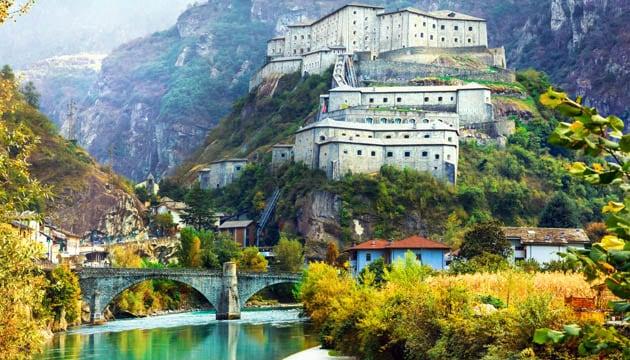
Castel Sant'Angelo, Rome, Lazio
Known as Hadrian's Mausoleum, Castel Sant'Angelo is a fortress located along the right bank of the Tiber River, the construction of which began in 135 AD by order of Emperor Hadrian, who wanted to use it as a mausoleum for his family. Connected to the Vatican State through the fortified corridor of the 'passetto', the castle was modified several times during the Middle Ages and the Renaissance, but it has an atypical history compared to other Roman monuments that were overwhelmed and reduced to ruins. Castel Sant'Angelo, from a funerary monument became a fortified outpost, a dark and terrible prison and a splendid Renaissance residence that saw Michelangelo at work, a Risorgimento prison and finally a museum. The castle, therefore, has accompanied the fortunes and history of Rome for almost two thousand years. Entering the castle via a spiral ramp, you can visit the five floors on which the papal rooms are arranged, decorated with Renaissance frescoes, the chamber with the ashes and the cells where illustrious figures were imprisoned, and finally a large terrace with a view over the city.

Torrechiara Castle, Parma, Emilia-Romagna
18 km from Parma, in the municipality of Langhirano, is Torrechiara Castle, built between 1448 and 1460 by the Magnificent Pier Maria Rossi. It is a 15th-century manor, situated on the top of a rocky and panoramic hill, commissioned by Count Pier Maria Rossi as a mighty defensive structure and elegant love nest for himself and his lover Bianca Pellegrini. In the castle of Torrechiara everything speaks of their love affair in epic-chivalric style: from the Camera d'Oro, attributed to Benedetto Bembo, to the nuptial room.
Its defensive function is attested by three circles of walls and four corner towers, its residential use, on the other hand, is proven by the richness of the 'grotesque' frescoes by Cesare Baglione. One of the most evocative in Italy, Torrechiara Castle fascinated writers and directors, and was the set of the famous film Ladyhawke.
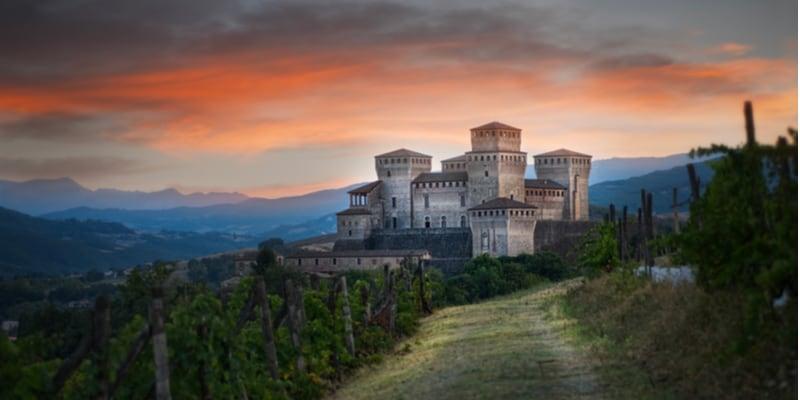
Rocca di Brisighella, Emilia-Romagna
The Manfrediana and Venetian Fortress of Brisighella, known simply as Rocca di Brisighella, is a fortification located on the second of three rocky selenite pinnacles that dominate the town of Brisighella, in the province of Ravenna. Built in 1310 by the Manfredi, lords of Faenza, the fortress remained in this family until 1500, when it passed to Cesare Borgia for only three years. From 1503 to 1509 it belonged to the Venetians who built the grandiose keep and two sides of the walls, then it became part of the Papal State. Today the castle is home to a museum dedicated to the relationship between Man and Chalk. Articulated around a vast inner courtyard with a trapezoidal shape, the fortress has two circular towers at the north-east and south-east corners, flanking the entrance, whose overlapping rooms lend themselves to being set up as exhibition and multimedia spaces. You can also follow the interactive multimedia path of the Pietre Parlanti (Talking Stones) that, through music and narrating voices, will tell you the history of the place.
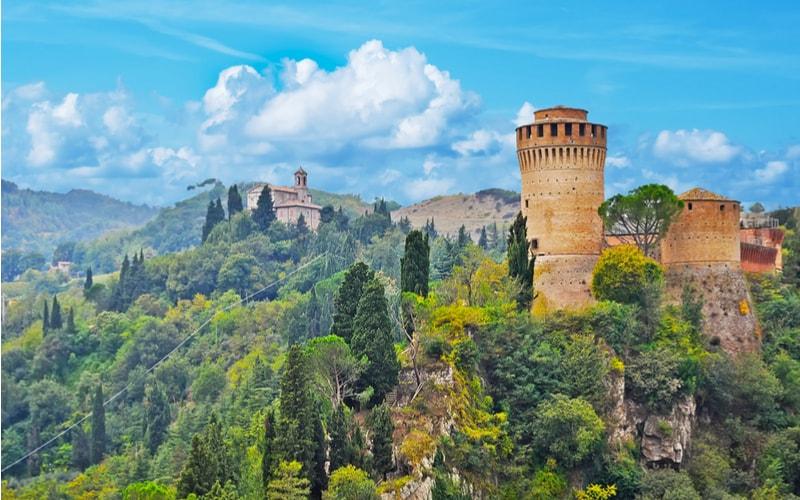
Castel del Monte, Apulia
A magical place 60 km from Bari. Castel del Monte is a 13th century fortress built by the Holy Roman Emperor, Frederick II, on the western Murge plateau in Apulia, in the municipality of Andria. A Unesco World Heritage Site, the castle is known for its octagonal shape: on each of the eight points is a tower of the same shape made of quartz and local limestone.
The castle, whose structure follows a geometric design reminiscent of a labyrinth, is loaded with symbolism that has fascinated many scholars. For instance, the irregular octagon on which the plan of the castle is based refers to the intermediate figure between the square, symbol of the earth, and the circle, representing the infinity of the sky, thus marking the passage from one to the other. The building would also be imbued with astrological symbols and its position would be designed so that on solstice and equinox days the shadows created by the walls would have a particular direction. Because of the strong symbolism with which it is imbued, it is thought that the castle might have been a sort of temple, or perhaps a temple of knowledge, in which to devote oneself undisturbed to the study of science. In any case, Castel del Monte is an architectural work of great charm, a synthesis of refined mathematical, geometric and astronomical knowledge.
Rocca Albornoziana in Spoleto, Umbria
The Rocca Albornoziana is an imposing fortress located on top of the Sant'Elia hill overlooking the city of Spoleto and the Spoleto valley. Built starting in 1359, it is part of a series of fortresses commissioned by Pope Innocent VI to re-establish the authority of the Pontiff, who was then living in Avignon, in the territories of central Italy that were part of the Papal States. To realise his project, the pope sent the powerful Spanish cardinal Egidio Albornoz, after whom the castle of Spoleto was named, to Italy and entrusted Matteo di Giovannello da Gubbio, known as 'il Gattapone', with the direction of the work. The Spoleto fortress was, therefore, the pivot of the defensive system placed to control the Flaminia and from which military actions aimed at reclaiming the territories of Umbria, Marche and Romagna started.
Over the years, it also became the residence of the rectors of the Duchy, the city governors and the papal legates. The fortress was enriched with decorations and frescoes, many of which were lost starting in 1816, when the structure was turned into a prison, a function it maintained until 1982. The castle of Spoleto, rectangular in shape and defended by six imposing towers, is composed of two courtyards, the Cortile delle Armi (Weapons Courtyard), originally the seat of the armed militia, and the Cortile d'Onore (Courtyard of Honour), reserved for administrators and governors, adorned by a hexagonal well and surrounded by a double loggia where numerous traces of papal coats of arms remain. Today it is possible to visit the Courtyard of Honour, the Courtyard of Arms, the Hall of Honour, used to host ceremonies and banquets, and the Camera Pinta, which preserves two beautiful fresco cycles of profane genre dating back to the 14th and 15th centuries. Finally, the Albornoziana fortress is also known for having hosted Lucrezia Borgia, daughter of Pope Alexander VI, who elected her regent of the Duchy of Spoleto when she was just 19 years old.
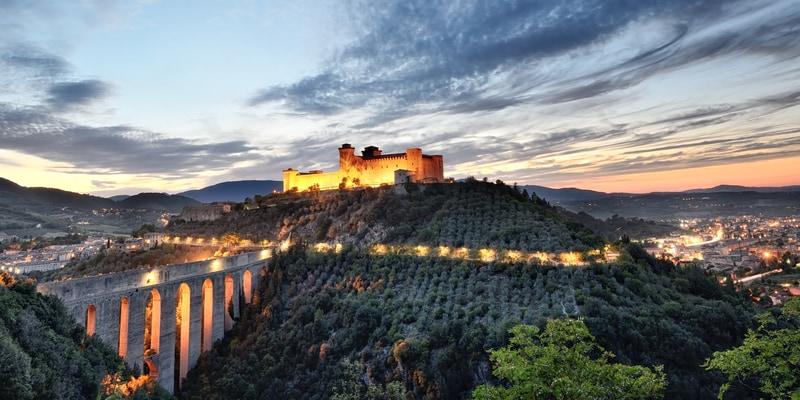
Pandone Castle in Venafro, Molise
On the rock that dominates Venafro, first the Samnites and then the Lombards built fortifications that were later incorporated into the Angevin-era castle, characterised by three large circular towers. In 1443, with the Aragonese, the castle passed to the Pandone family, who turned it into a representative residence. Between 1522 and 1527, Enrico Pandone had every room on the main floor frescoed with the representation of his horses, the stallions of the royal stables, which he bred himself. The age, breed, name, coat colour and H symbol, i.e. Henricus's stud farm, are shown of each horse. Inside, you can still admire a 14th-century staircase, the main floor, the so-called "Ballatoio dei Cavalli da Corsa" (gallery of racing horses), a beautiful loggia with arches and the Hall of Charles V's Horse, a specimen given to Emperor Charles V as a token of gratitude for appointing Count Henricus Duke of Boiano.
Finally, the Salone dei Conti (Counts' Hall), the Sala del Teatrino (Theatre Hall) and a special garden complete the visit to the interior of the Venafro Castle. The castle is also home to the National Museum, which houses frescoes, sculptures, paintings, drawings and prints from the Middle Ages to the Baroque period. Visiting the castle of Venafro, therefore, is like taking a journey through the pictorial art of seventeen centuries.
Castello Sforzesco, Milan, Lombardy
For centuries, the Milanese considered the castle an emblem of tyranny and foreign domination. Only with the unification of Italy did the castle, transformed into a centre of culture, become dear to the Milanese. It was the Visconti family, lords of Milan, who requested its construction in the second half of the 14th century, but it was rebuilt in 1450 by Francesco Sforza I, husband of Bianca Maria Visconti, who made it his residence. Under Ludovico il Moro then, towards the end of the 15th century, the castle became one of the most opulent venues in Europe, thanks also to the works of Bramante and Leonardo da Vinci. Over time, it went from being a stately home to a military fortification under Spanish and Habsburg rule. Finally, in the 20th century, the castle acquired the name 'Sforzesco'. Today the castle is home to civic museums and since the end of the 19th century has housed one of the largest art collections in Milan. Among the various museums are the Picture Gallery, the Egyptian Museum and the Sale Viscontee as well as a museum entirely dedicated to Michelangelo's Pietà Rondanini.
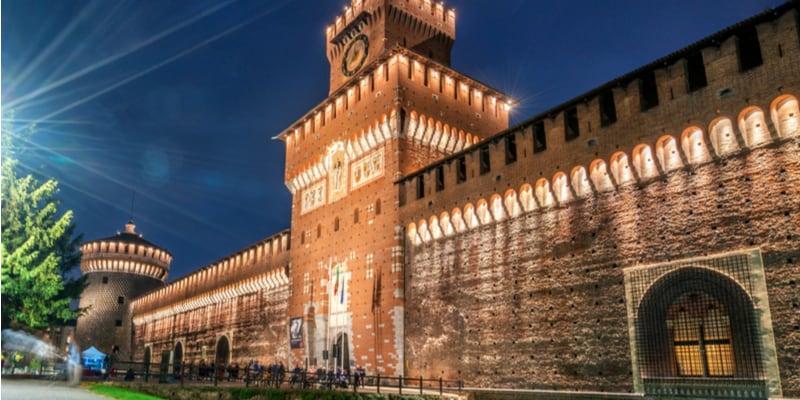
Fénis Castle, Aosta Valley
Situated on a gentle hill surrounded by green meadows, Fénis Castle is one of the best-preserved medieval castles in Italy. The position of the castle, completely lacking in natural defences, suggests that it was a lordly residence.
What is certain is that it belonged to the Challant-Fénis family until 1716, when it was ceded to Count Baldassarre Castellar of Saluzzo Paesana. With a pentagonal plan, the castle is recognisable by its double crenellated walls and numerous towers that give it a fairytale appearance. Visiting the castle, on the ground floor you will see the weapons room, the refectory for soldiers and servants, the pantry and the kitchen with a large fireplace. Continuing on to the first floor, you will see the chapel with the adjoining reception room, the domini chamber, the noble kitchen, the lords' dining room and the hall of justice. The tour ends in the inner courtyard, with the semicircular staircase surmounted by the remarkable fresco of Saint George slaying the dragon.
Aragonese Castle in Otranto, Apulia
It is the symbol of the Salento town that gave its name to the first Gothic novel, The Castle of Otranto by Horace Walpole (1764). The imposing Aragonese castle by the sea was rebuilt after a Turkish attack on the remains of an earlier fortification. The current appearance of the fortress, however, is due to the Spanish viceroys, who turned it into a true masterpiece of military architecture: extraordinary defence works were carried out in 1535 by Don Pedro of Toledo, whose coat of arms remains on the entrance portal and outer curtain. The fascinating fortress, with its pentagonal plan, looking eastwards in memory of the Saracen attacks, is still there today, watching over Italy's easternmost city. For some years now, it has been transformed into an important cultural landmark: the rooms of the castle host exhibitions and works of art, concerts and events. Don't miss the dungeons, rich in art and mysterious legends.
Swabian Castle, Trani, Apulia
In Trani, under the reign of Frederick II of Swabia in 1233, a castle was built on the ruins of a 10th-century tower, just a few steps from the large and famous cathedral, along the same terrace overlooking the sea. Trani Castle was built on the model of the Crusader castles in the Holy Land, themselves indebted to the Roman castra, with a quadrangular plan.
Then under Spanish rule in 1533, the castle underwent major transformations, mainly to house the new defensive weapons that came about following the invention of gunpowder. The light-coloured stone castle overlooking the sea has two monumental halls on the first floor, dating from the Frederician period, a central core enlarged by ramparts, and the casemate building, built during the Renaissance period.
Aci Castle, Catania, Sicily
The seaside village of Aci Castello, a few kilometres from Catania, is known for the basaltic rock on top of which stands the castle that gives the town its name. The rock on which the stronghold stands originated from a marine basaltic volcanic eruption over 500,000 years ago. The castle, on the other hand, was built in the 7th century by the Byzantines on a pre-existing Roman fortification called Castrum Jacis. The castle as we see it today, however, dates back to Norman times. In 1297, the castle became the residence of Frederick II of Aragon. During the Sicilian Vespers it was subjected to the rule of Roger of Lauria, then in Aragonese times it belonged to John of Sicily and finally to the Alagonas, being besieged several times. Today it is home to a civic museum that houses historical artefacts ranging from prehistoric to medieval times and also has an area dedicated to mineralogy. There is also an interesting botanical garden outside with a wide variety of plants.
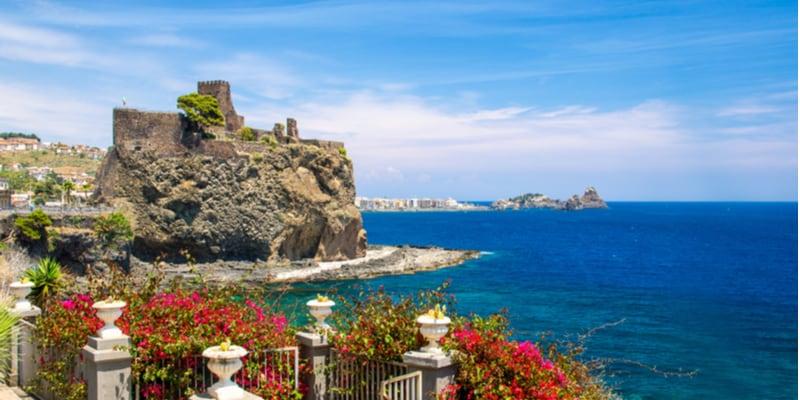
Ruffo Castle, Scilla, Calabri
Arriving from the sea, the Ruffo castle will welcome you to Scilla. The castle dominates the village and promontory of Scilla, overlooking the Strait of Messina. The castle is the genius loci of the town about 20 km north of Reggio Calabria. The castle stands on an initial structure built on the village's cliff in the 5th century B.C., transformed over the centuries into a fortress, often the subject of reconstructions and extensions.
Around the middle of the 16th century, Prince Paolo Ruffo gave it its current structure with an irregular layout, which however underwent further reconstruction following the damage caused by several earthquakes. Today, the castle, which also houses the Scilla lighthouse, is a cultural centre, home to exhibitions and conferences, as well as the Regional Centre for the Recovery of Calabria's Historic Centres.
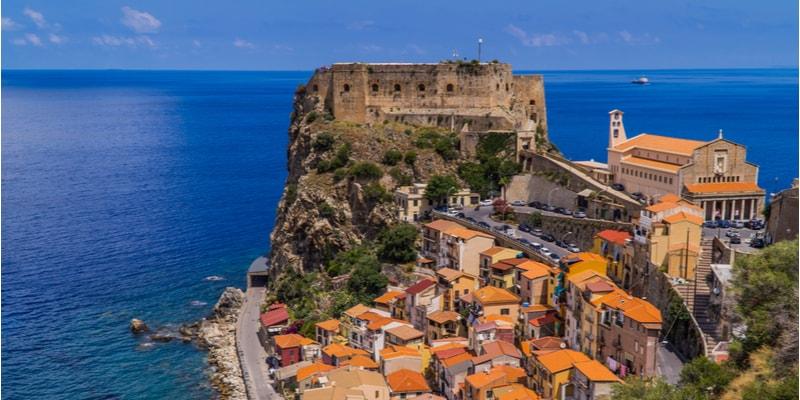
Italy